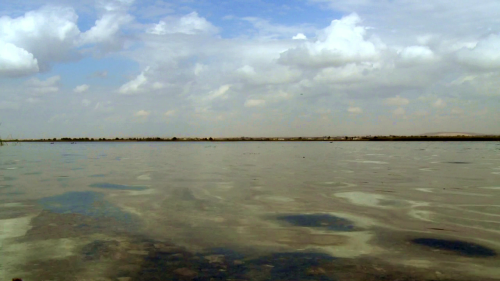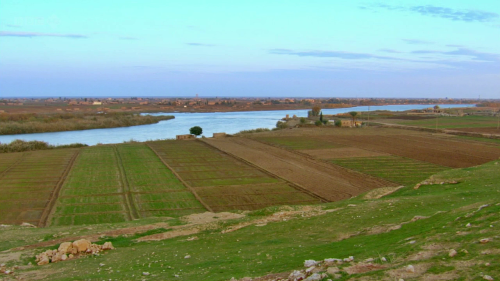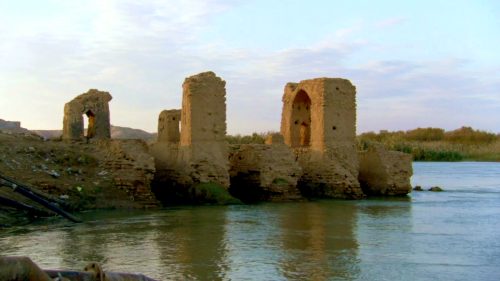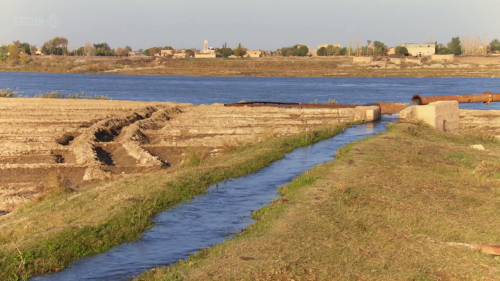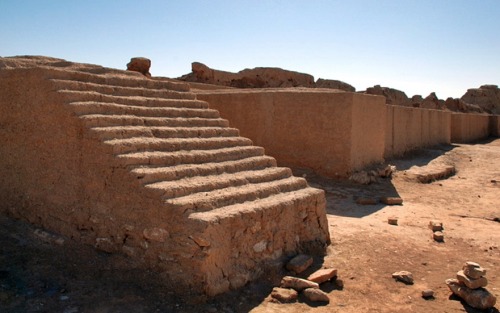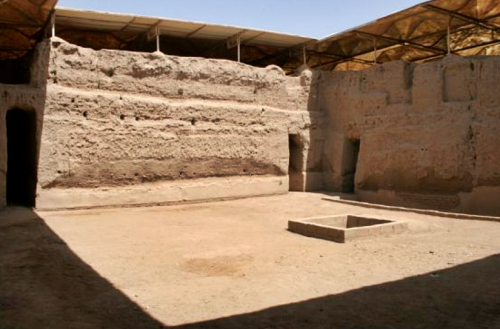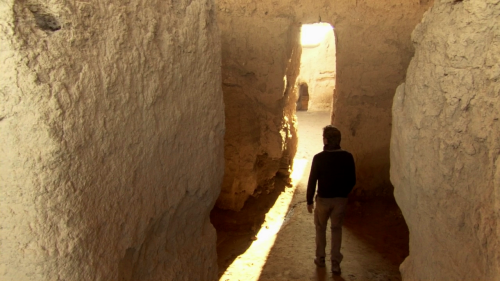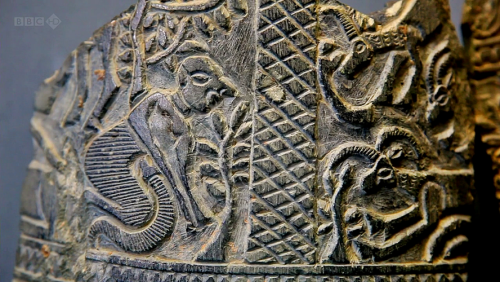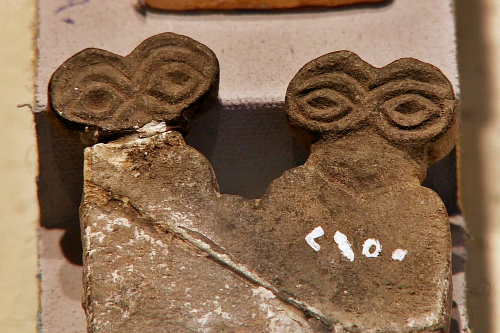#come together
Ancient Worlds - BBC Two
Episode 1 “Come Together”
TheEuphrates is the longest river in southwest Asia and one of the most historically important rivers in the world. The Euphrates rises in Turkey and flows southeast across Syria and through Iraq. Along with the river Tigris, it provided much of the water that supported the development of ancient Mesopotamianculture.
The Tigris Euphrates valley was the birthplace of the ancient civilisations of Assyria, Babylonia,Sumer and the Akkadian Empire. The ancient Greeks called that region Mesopotamia “the land between two rivers” (Tigris/Euphrates). People had occupied that marginal land for 1.000 years before the first cities appeared. They arrived as pastoralists with their herds; they stayed on as farmers close to the river banks in scattered communities of 1.000 or 2.000 people at most. Around 3.100 BC Southern Mesopotamia experienced a growth in the number and size of settlements, suggesting strong population growth. People left the security of their family compounds and tribal villages and they came together with other strangers to create something far more complex: a city, a society, a civilisation. Many of these city-states were located along canals of the Euphrates and the Tigris. A similar development, although on a smaller scale than in Lower Mesopotamia, took place in Upper Mesopotamia in the second part of the 3rd millennium BC.
All the ancient civilisations of the world have flourished near the river beds The Tigris Euphrates river system is one of the four river civilisations where writing was invented, along with the Nile valleyinEgypt (Nile River), the Indus Valley civilisation in the Indian subcontinent (Indus River), and the Yellow RiverinChina.
Post link
Ancient Worlds - BBC Two
Episode 1 “Come Together”
Mari (modern Tell Hariri, in Syria) was an ancient Mesopotamian city on the western bank of the Euphrates river and one of the hegemonic states of the area during the 3rd and early 2nd millennia BC. The city flourished as a trade center; it was strategically important as a relay point between the Sumerian cities of lower Mesopotamia,Babylon, the Levant,EgyptandPersia.
Archaeologists have discovered a wealth of prestigious palaces and temples, art schools and an exceptional quantity of administrative archives dating back to the last periods of the city. More than 25.000 clay tablets in Akkadian language written in cuneiform were discovered (The Mari Tablets).
TheRoyal Palace of Mari was the royal residence of the rulers of the ancient kingdom. King Zimri-lim (reigned from about 1779-5 to 1761 BC) expanded the palace which was possibly the largest at the time. It contained more tan 200 rooms, several statues and exquisite artefacts. The throne room was designed like a temple, its walls covered with brilliantly coloured frescoes. The palace even had its own ice-house so that the king’s honey-sweetened wine could be served cold.
Mari was destroyed by Hammurabi, king of Babylon(this is known from the numerous state archives tablets that recount Hammurabi turning on his old ally king Zimri-lim). After this destruction the city was inhabited sporadically but it never regained its former status.
Mari, Tell Hariri, Syria
Post link
Ancient Worlds - BBC Two
Episode 1 “Come Together”
Thegold helmet of Meskalamdug (c. 2400 BC)
The helmet was found in the Royal Tombs of Ur, in PG 755 by the British archaeologist Leonard Woolley. It belongs to the early dynastic period, the first Dinasty of Ur.
King Meskalamdug was not mentioned on the Sumerian king but his son, Mesannepada was the first king listed. Many of the artifacts found in tomb PG 755 bear the name of Meskalamdug but the cylinder seal of Meskalamdug was found in a larger tomb (PG 1054). Woolley believed that the smaller tomb was not the tomb of king Meskalamdug, but it perhaps belonged to his grandson, an elite, but not necessarily a king. The distinctive helmet was the kind of helmet usually worn by lords and kings and it had a ceremonial purpose.
The helmet was made from a single piece of gold and fashioned to look like hair. In the back of the helmet there is a small hollow bump, used to hold the hair of its owner (in a bun) and it has holes in the ears.
The helmet on the picture (British Museum) is an electrotype copy of the original helmet -which was in Baghdad, in the National Museum of Iraq.
The British Museum, London, UK
Post link
Ancient Worlds - BBC Two
Episode 1 “Come Together”
One of the earliest images of the development of agriculture.
Fragment of a vessel from the Temple of ShamashatMari, Syria. The staetite relief depicts a man tending to a plant. (Early dynastic period I, c. 2900 BC).
Agriculture, growing crops rather than raising livestock, pre-dates the first cities by thousands of years. But at some point agricultural activity in Mesopotamia became more intensive and on a larger scale than had ever been seen before. The geography of southern Mesopotamia is such that agriculture is possible only with irrigation and good drainage, a fact which had a profound effect on the evolution of early civilisation. The need for irrigation led the Sumerians, and later the Akkadians, to build their cities along the TigrisandEuphrates and the branches of these rivers. The farmers built dams and dug canals to bring the water to the crops, on which all their lives now depended. The social consequences of this cooperation were profound; those farmers were planting the seed from which the tree of civilisation would grow.
The city of Mari, situated on the right bank of the Euphrates river, flourished in the 3rd millennium BC. Excavations discoved an enormous palace, with nearly 300 rooms and two floors and also an archive over 20.000 tablets in Akkadian language written in cuneiform. The temple of Shamash was dedicated to the Sun god, who was regarded among Mari’s most important deities.
National Museum of Damascus, Syria
Post link
Richard Miles Archaeologist
ONE DAY, ONE IMAGEAlabaster “Eye Idols” from the ancient site of Tell Brak, north Mesopotamia -Syria- (c. 3500-3300 BC)
Post link
I’ve seen Green Day a handful of times now. I don’t know how many; I don’t keep track. But I do know that music brings people together and anytime Matt and I are brought together for Green Day, it’s a good time. I failed to secure GA tickets when the presale came out months ago and we debated what or how to get seats for the past several months.
Well, it came down to game time this year. Or, I guess you could say, it came down to Fuck Time. We bought seats in the nose bleeds on StubHub four hours before and we thought, well, it’s Green Day and our seats for PNC in Holmdel, NJ in 2010 sucked, too, but it’ll still be awesome to be in the room. When we arrived at our seats, which were basically on the right side of the stage against the wall, Matt and his girlfriend sat down and I went to ‘use the bathroom,’ aka scope out new seat as I’ve never been one to accept the shitty seats I’ve been dealt, even if they were the ones I bought. Nobody puts baby in the nosebleeds.
I found an area, still on the second level, but lower than where we were, directly across from the stage, that was inhabited by a railing, three or four high top tables and a few folding chairs, with a few people milling about. I scoped out the area, leaning against the railing, seeing if anyone would tell me move, and after 3 minutes, I rallied to the troops to relocate. The view was much better and we were all more than happy to sit (or lean) for the duration of the concert. Photos and more thoughts after the jump.
Against Me opened and they were great, but we didn’t really pay attention to them. The setlist was the standard setlist that they’ve been playing on this arm of the tour and it included King For a Day, which although it’s a song all of us would like them to stop playing for the rest of time, I couldn’t help but sing along. Matt and I performed as much of the American Idiot choreography as we could. Some dude rocked out during Longview and BJA asked him after, ”are you trying to take my damn job?” BJA asked after, and I’m pretty sure the fan Billie Joe pulled up onstage to sing Know Your Enemy didn’t actually know the lyrics.
I have a newly found respect for a couple of the songs from Revolution Radio that they played, mostly YoungbloodandForever Now.
Billie Joe, a master in the art of subtlety let out an exasperated, “Fuck you, Donald Trump!” at the end ofLetterbomb.
St. Jimmy was out of this world energized. Always a favorite of mine to see performed.
We watched on in horror, and also laughing, at the two kids who were sitting in folding chairs covering their ears and sulking while they’re parents (probably mid-to-late 30 something’s) danced and embarrassed the hell out of them.
The GA area was outrageously small and had no energy in it whatsoever. The three of us plus another couple who were probably of a similar age had more energy than all of the kids on the ground. I’ll just say this: There were far too many seats on the floor and the first rule of Green Day is: you don’t sit at Green Day.
The energy was high for the first encore which included American Idiot followed by the sensible 7-minute Jesus of Suburbia.
Lastly, I’m glad they’ve gone back to ending with Good Riddance. It’s just not the same when they don’t.
i have a thousand other thoughts but they’d make no sense and this “review” is pretty consciousness as it is. Green Day concerts, regardless of where you’re sitting, are always a good time and should always be attended when possible. They bring people together and get people off their news feeds, even if only for two-and-a-half hours. The backdrops, pyro, and lighting were fucking awesome, too. Snaps for whoever designed the tour. Last, but not least, here are a few photos:
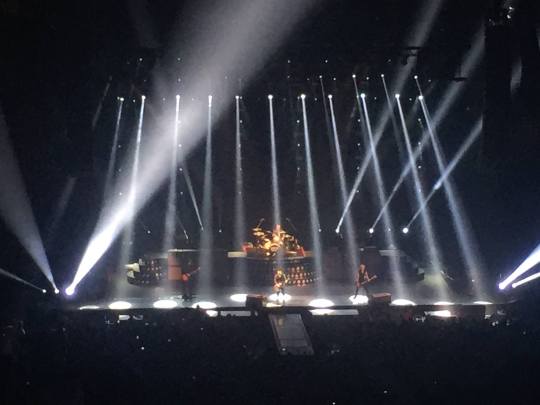


So much pyro onstage!
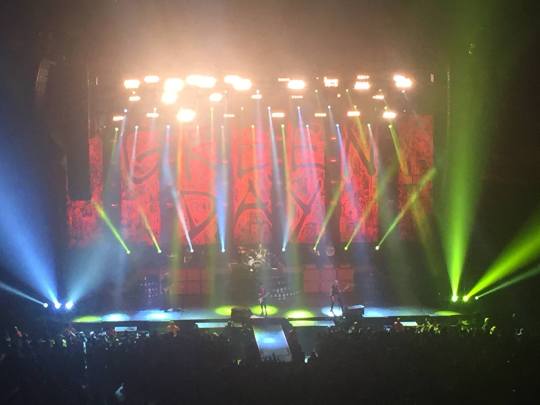

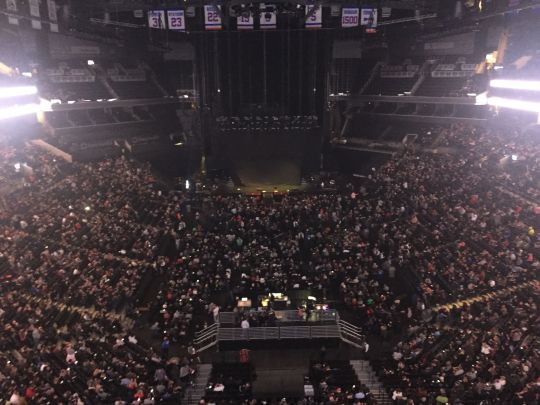
Tiny GA section.

